Optimal Modulation of Regenerative Braking in Through-The-Road Hybridized Vehicles
Abstract
1. Introduction
2. Regenerative Braking Strategy
2.1. Safety Braking Region Definition
- and are the longitudinal forces on front and rear axles;
- and are the vertical forces on front and rear axles;
- is the vehicle speed;
- is the distance between front and rear wheels;
- and are the distances between vehicle centre of gravity and the front and rear axles;
- is the height of the vehicle center of gravity;
- is the vehicle weight;
- is the position of the vehicle center of gravity;
- is the street reference system;
- is the vehicle reference system.
2.2. Estimation of Energy Recoverable via Regenerative Braking
- the electric brakes are located on rear wheels; their rotating speed is directly linked to the vehicle speed, without mechanical gear;
- the braking force on the rear wheels is the sum of the mechanical and the electrical contribution, where only this latter can contribute to regeneration;
- the mechanical braking is distributed between front axle (about 70%) and rear axle (about 30%);
- the power that can be recovered to the battery depends on the most restrictive conditions deriving from: maximum braking force compatible with grip limits; maximum power deliverable by electric brakes for the given vehicle speed; maximum power accepted by the battery.
3. Optimal Braking Modulation
4. Results
5. Conclusions
Author Contributions
Funding
Institutional Review Board Statement
Informed Consent Statement
Data Availability Statement
Conflicts of Interest
References
- Masson-Delmotte, V.; Zhai, P.; Pörtner, H.-O.; Roberts, D.; Skea, J.; Shukla, P.R.; Pirani, A.; Moufouma-Okia, W.; Péan, C.; Pidcock, R.; et al. Global Warming of 1.5 °C. In An IPCC Special Report on the Impacts of Global Warming of 1.5 °C above Pre-Industrial Levels and Related Global Greenhouse Gas Emission Pathways, in the Context of Strengthening the Global Response to the Threat of Climate Change, Sustainable Development, and Efforts to Eradicate Poverty; IPCC: Geneva, Switzerland, 2018. [Google Scholar]
- European Environment Agency. Electric Vehicles from Life-cycle and Circular Economy Perspectives. EEA Rep. 2018, 2, 25. [Google Scholar]
- Guzzella, L.; Sciarretta, A. Vehicle Propulsion Systems—Introduction to Modeling and Optimization; Springer: Berlin/Heidelberg, Germany, 2013. [Google Scholar]
- Suntharalingam, P. Kinetic Energy Recovery and Power Management for Hybrid Electric Vehicles. Ph.D. Thesis, Cranfield University, Bedford, UK, 2011. [Google Scholar]
- Li, W.; Du, H.; Li, W. Driver Intention Based Coordinate Control of Regenerative and Plugging Braking for Electric Vehicles with In-wheel PMSMS. IET Intell. Transp. Syst. 2018, 12, 1300–1311. [Google Scholar] [CrossRef]
- Ko, J.; Ko, S.; Son, H.; Yoo, B.; Cheon, J.; Kim, H. Development of Brake System and Regenerative Braking Cooperative Control Algorithm for Automatic-Transmission-Based Hybrid Electric Vehicles. IEEE Trans. Veh. Technol. 2014, 64, 431–440. [Google Scholar] [CrossRef]
- Nian, X.; Peng, F.; Zhang, H. Regenerative Braking System of Electric Vehicle Driven by Brushless DC Motor. IEEE Trans. Ind. Electron. 2014, 61, 5798–5808. [Google Scholar] [CrossRef]
- Mutoh, N.; Hayano, Y.; Yahagi, H.; Takita, K. Electric Braking Control Methods for Electric Vehicles With Independently Driven Front and Rear Wheels. IEEE Trans. Ind. Electron. 2007, 54, 1168–1176. [Google Scholar] [CrossRef]
- Wyczalek, F.A.; Wang, T.C. Regenerative Braking Concepts for Electric vehicles—A Primer in SAE Technical Paper, Society of Automotive Engineers; SAE International: Detroit, MI, USA, 1992. [Google Scholar]
- Vodovozov, V.; Raud, Z.; Petlenkov, E. Review on Braking Energy Management in Electric Vehicles. Energies 2021, 14, 4477. [Google Scholar] [CrossRef]
- Jamadar, N.M.; Jadhav, H.T. A review on braking control and optimization techniques for electric vehicle. Proc. Inst. Mech. Eng. Part D J. Automob. Eng. 2021, 235, 2371–2382. [Google Scholar] [CrossRef]
- Kumar, N.; Subramanian, S. Cooperative control of regenerative braking and friction braking for a hybrid electric vehicle. Proc. Inst. Mech. Eng. Part D J. Automob. Eng. 2016, 230, 103–116. [Google Scholar] [CrossRef]
- Maia, R.; Silva, M.; Araùjo, R.; Nunes, U. Electrical vehicle modeling: A Fuzzy logic model for regenerative braking. Expert Syst. Appl. 2015, 42, 22. [Google Scholar] [CrossRef]
- Kamal, E.; Adouane, L. Intelligent Energy Management Strategy Based on Artificial Neural Fuzzy for Hybrid Vehicle. IEEE Trans. Intell. Veh. 2017, 3, 112–125. [Google Scholar] [CrossRef]
- Heydari, S.; Fajri, P.; Rasheduzzaman, M.; Sabzehgar, R. Maximizing Regenerative Braking Energy Recovery of Electric Vehicles Through Dynamic Low-Speed Cutoff Point Detection. IEEE Trans. Transp. Electrification 2019, 5, 262–270. [Google Scholar] [CrossRef]
- Xu, G.; Xu, K.; Zheng, C.; Zhang, X.; Zahid, T. Fully Electrified Regenerative Braking Control for Deep Energy Recovery and Maintaining Safety of Electric Vehicles. IEEE Trans. Veh. Technol. 2015, 65, 1186–1198. [Google Scholar] [CrossRef]
- Yang, Y.; Tang, Q.; Bolin, L.; Fu, C. Dynamic Coordinated Control for Regenerative Braking System and Anti-Lock Braking System for Electrified Vehicles Under Emergency Braking Conditions. IEEE Access 2020, 8, 172664–172677. [Google Scholar] [CrossRef]
- Fajri, P.; Lee, S.; Prabhala, V.A.K.; Ferdowsi, M. Modeling and Integration of Electric Vehicle Regenerative and Friction Braking for Motor/Dynamometer Test Bench Emulation. IEEE Trans. Veh. Technol. 2015, 65, 4264–4273. [Google Scholar] [CrossRef]
- Zhang, X.; Göhlich, D.; Li, J. Energy-efficient Torque Allocation Design of Traction and Regenerative Braking for Distributed Drive Electric Vehicles. IEEE Trans. Veh. Technol. 2018, 67, 285–295. [Google Scholar] [CrossRef]
- Galvagno, E.; Morina, D.; Sorniotti, A.; Velardocchia, M. Drivability analysis of through-the-road-parallel hybrid vehicles. Meccanica 2012, 48, 351–366. [Google Scholar] [CrossRef][Green Version]
- Rizzo, G.; Naghinajad, S.; Tiano, F.A.; Marino, M. A Survey on Through-the-Road Hybrid Electric Vehicles. Electronics 2020, 9, 879. [Google Scholar] [CrossRef]
- Hall, J.; Bassett, M.; Borman, S.; Lucas, T.; Whitehead, A. Through-the-Road Parallel Hybrid with In-Wheel Motors; SAE International: Detroit, MI, USA, 2016. [Google Scholar] [CrossRef]
- Tiano, F.A. Energy and Environmental Analysis for a Through-The-Road Solar Hybrid Electric Vehicle Including Control Strategies and Life Cycle Assessment. Ph.D. Dissertation, University of Salerno, Salerno, Italy, 2020. [Google Scholar]
- Tiano, F.A.; Rizzo, G.; De Feo, G.; Landolfi, S. Converting a Conventional Car into a Hybrid Solar Vehicle: A LCA Approach. IFAC-PapersOnLine 2018, 51, 188–194. [Google Scholar] [CrossRef]
- Rizzo, G.; Tiano, F.A. Life Cycle Assessment (LCA) study for different options of sustainable mobility, including vehicle conversion. Int. J. Powertrain 2020, 12, 521–538. [Google Scholar]
- Arsie, I.; D’Agostino, M.; Naddeo, M.; Rizzo, G.; Sorrentino, M. Toward the Development of a Through-The-Road Solar Hybridized Vehicle. IFAC Proc. Vol. 2013, 46, 806–811. [Google Scholar] [CrossRef]
- Marano, V.; Medina, H.; Sorrentino, M.; Rizzo, G. A Model to Assess the Benefits of an After-Market Hybridization Kit based on Realistic Driving Habits and Charging Infrastructure. SAE Int. J. Altern. Powertrains 2013, 2, 471–481. [Google Scholar] [CrossRef]
- D’Agostino, M.; Naddeo, M.; Rizzo, G. Development and validation of a model to detect active gear via OBD data for a Through-The-Road Hybrid Electric Vehicle. IFAC Proc. Vol. 2014, 47, 6618–6623. [Google Scholar] [CrossRef]
- Pisanti, C.; Rizzo, G.; Marano, V. Energy Management of Through-The-Road Parallel Hybrid Vehicles. In Proceedings of the 19th IFAC World Congress, Cape Town, South Africa, 24–29 August 2013; Volume 19, pp. 2118–2124. [Google Scholar]
- Grandone, M.; Naddeo, M.; Marra, D.; Rizzo, G. Development of a regenerative braking control strategy for hybridized solar vehicle. IFAC-PapersOnLine 2016, 49, 497–504. [Google Scholar] [CrossRef]
- Guiggiani, M. The Science of Vehicle Dynamics: Handling, Braking, and Ride of Road and Race Cars; Springer: Dordrecht, The Netherlands, 2014. [Google Scholar]
- Anderson, M.; Harty, D. Unsprung mass with in-wheel motors-myths and realities. In Proceedings of the 10th International Symposium on Advanced Vehicle Control, Loughborough, UK, 22–26 August 2010. [Google Scholar]
- Christensen, L. Designing In-Hub Brushless Motors. Mach. Des. 2014, 86, 42–45. Available online: https://www.machinedesign.com/motors-drives/article/21833665/designing-inhub-brushless-motors (accessed on 1 October 2021).
- Rajamani, R. Vehicle Dynamics and Control; Springer Science & Business Media: Cham, Switzerland, 2011. [Google Scholar]
- Luque, P.; Mántaras, D.A.; Fidalgo, E.; Álvarez, J.; Riva, P.; Girón, P.; Compadre, D.; Ferran, J. Tyre–road grip coefficient assessment—Part II: Online estimation using instrumented vehicle, extended Kalman filter, and neural network. Veh. Syst. Dyn. 2013, 51, 1872–1893. [Google Scholar] [CrossRef]
- Yunta, J.; Garcia-Pozuelo, D.; Diaz, V.; Olatunbosun, O. A Strain-Based Method to Detect Tires’ Loss of Grip and Estimate Lateral Friction Coefficient from Experimental Data by Fuzzy Logic for Intelligent Tire Development. Sensors 2018, 18, 490. [Google Scholar] [CrossRef] [PubMed]
- Bári, G. Modelling the situation of driving on the grip limit with DDPG algorithm. IOP Conf. Ser. Mater. Sci. Eng. 2018, 393, 012031. [Google Scholar] [CrossRef]
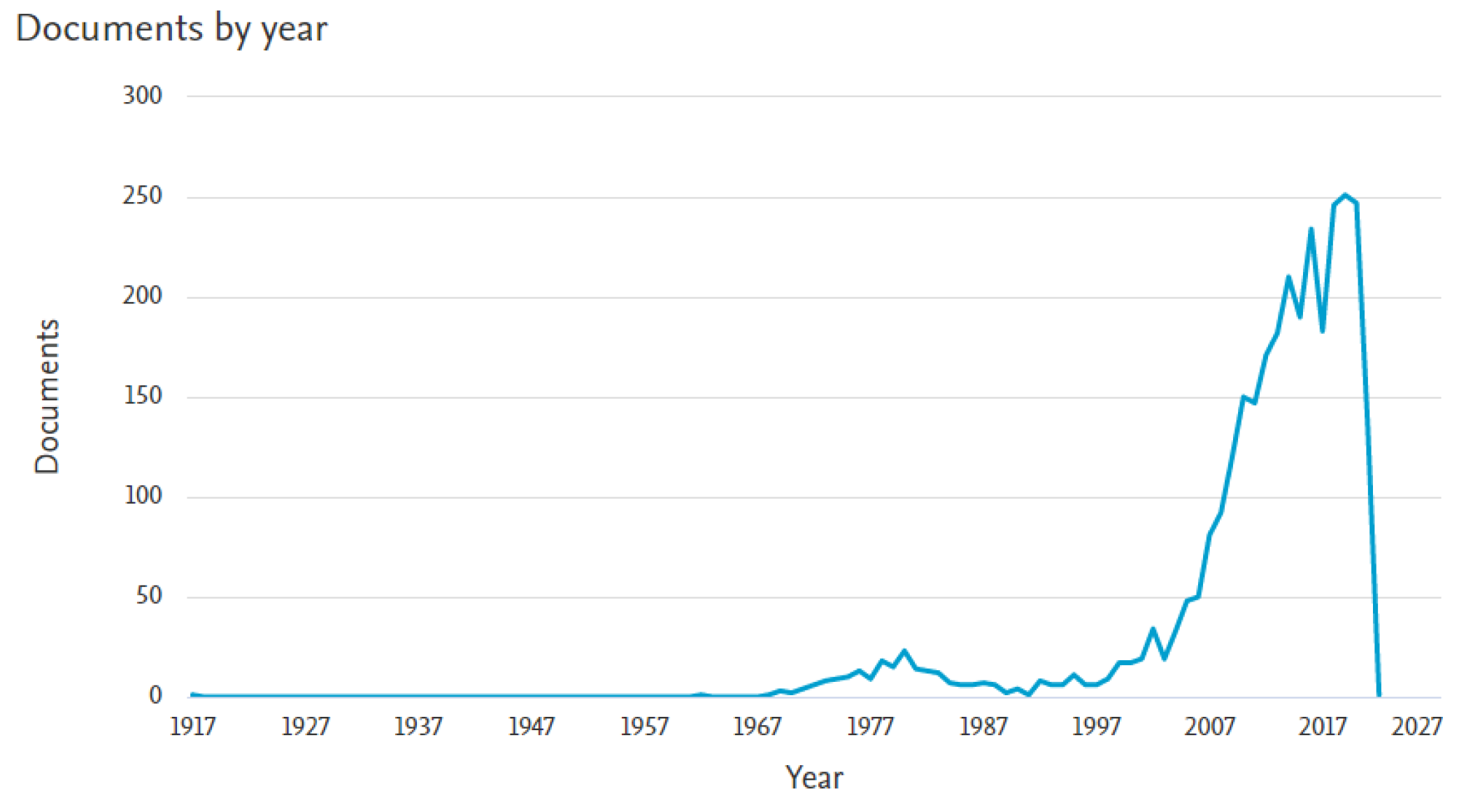
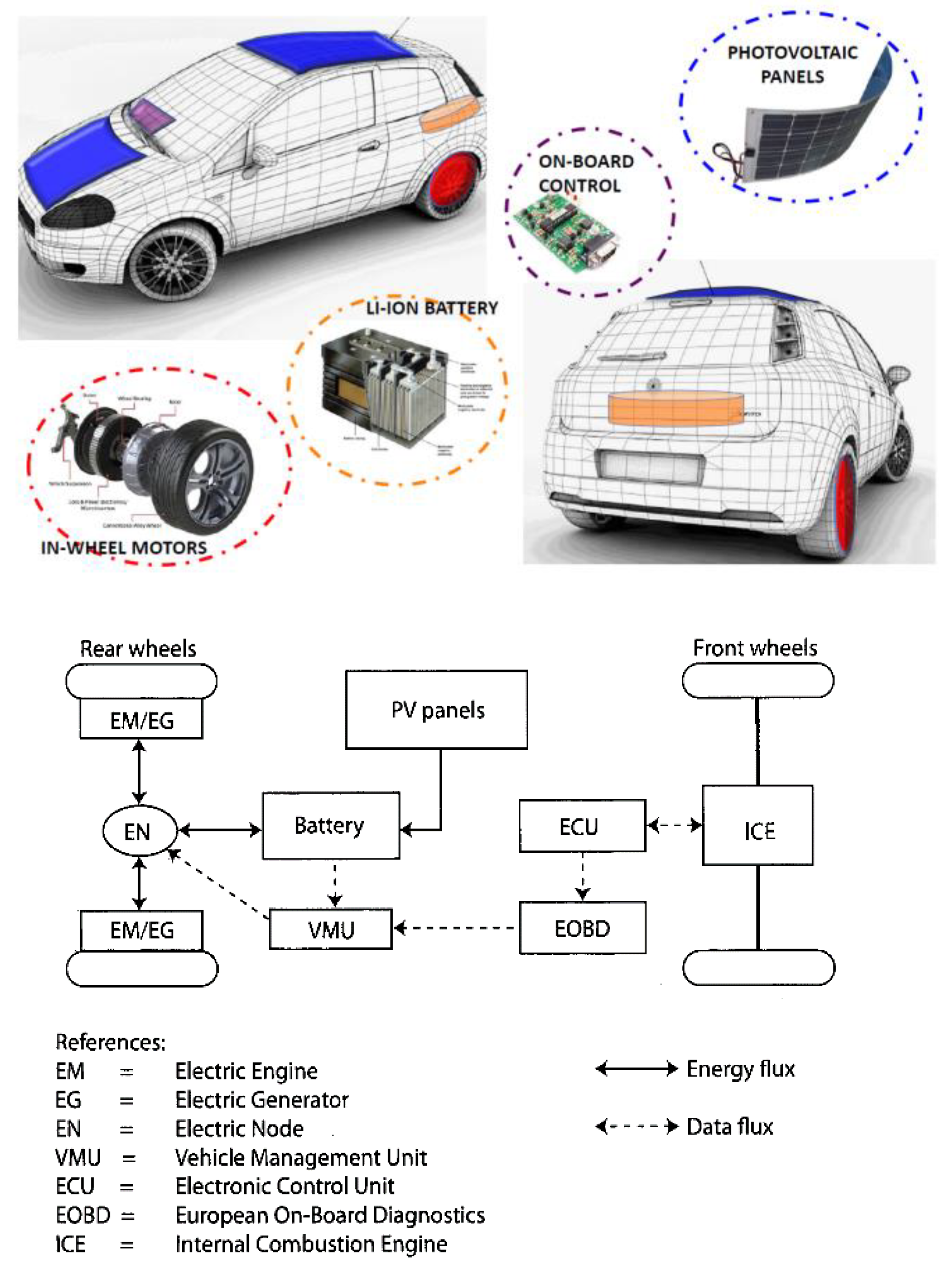
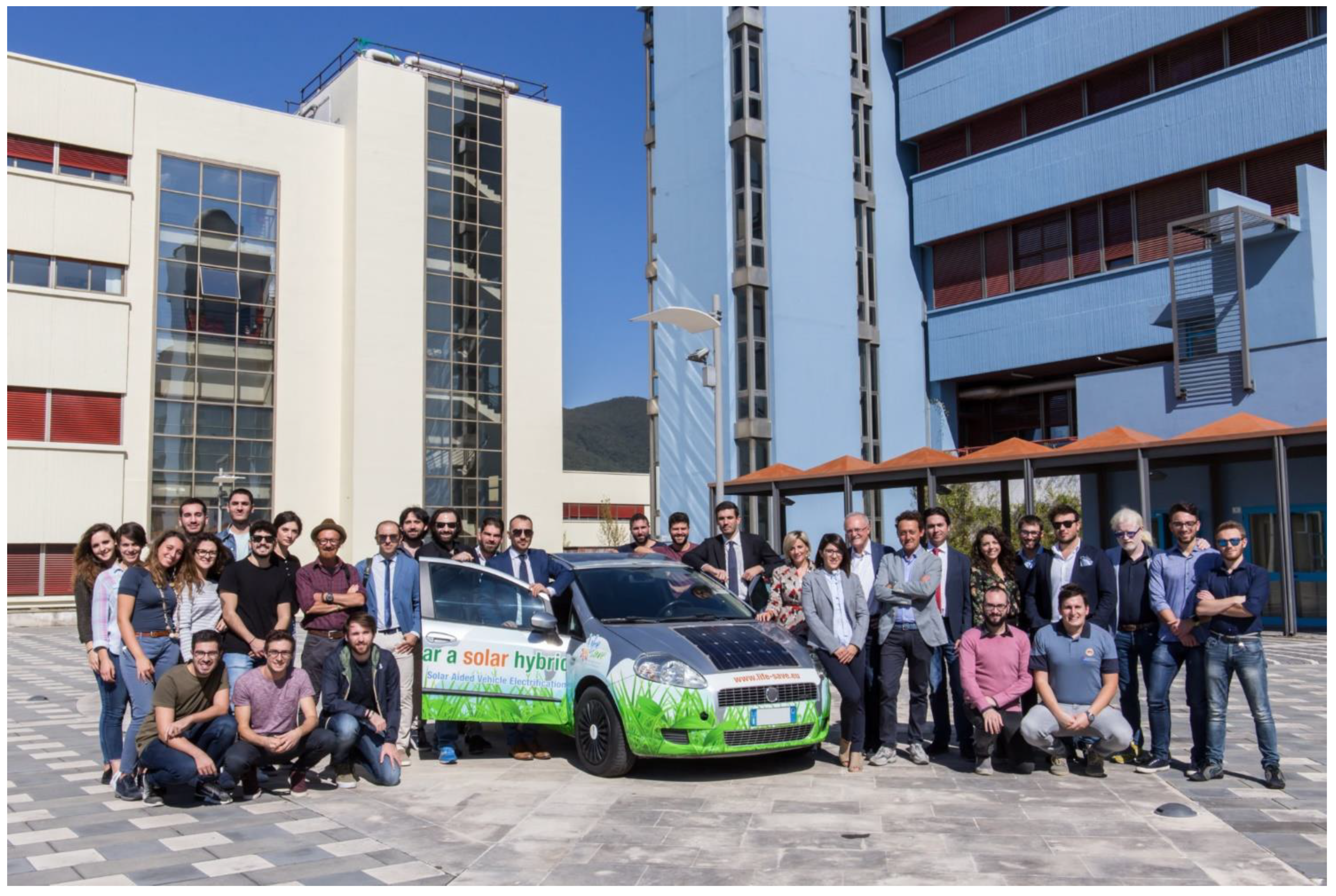


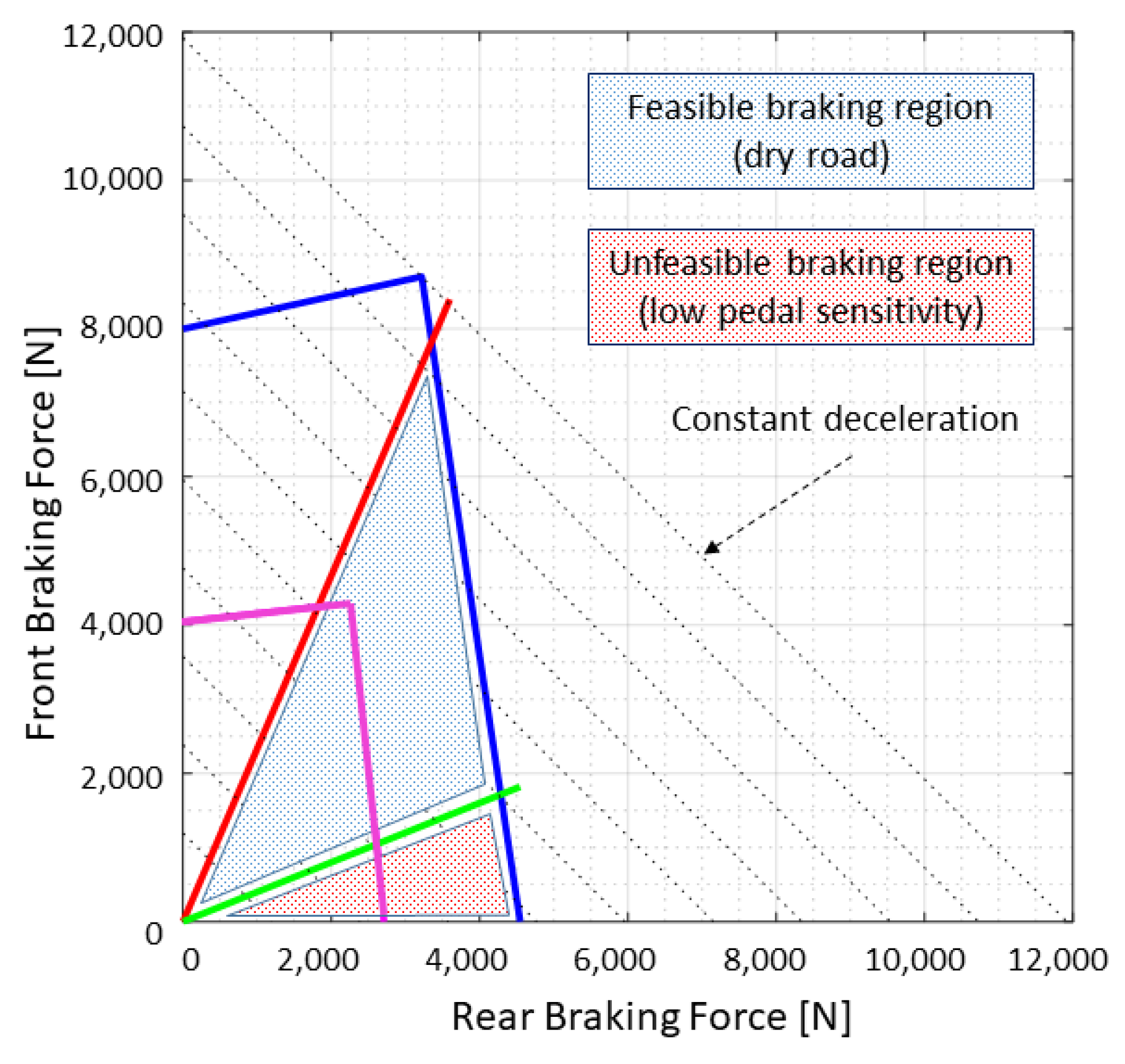
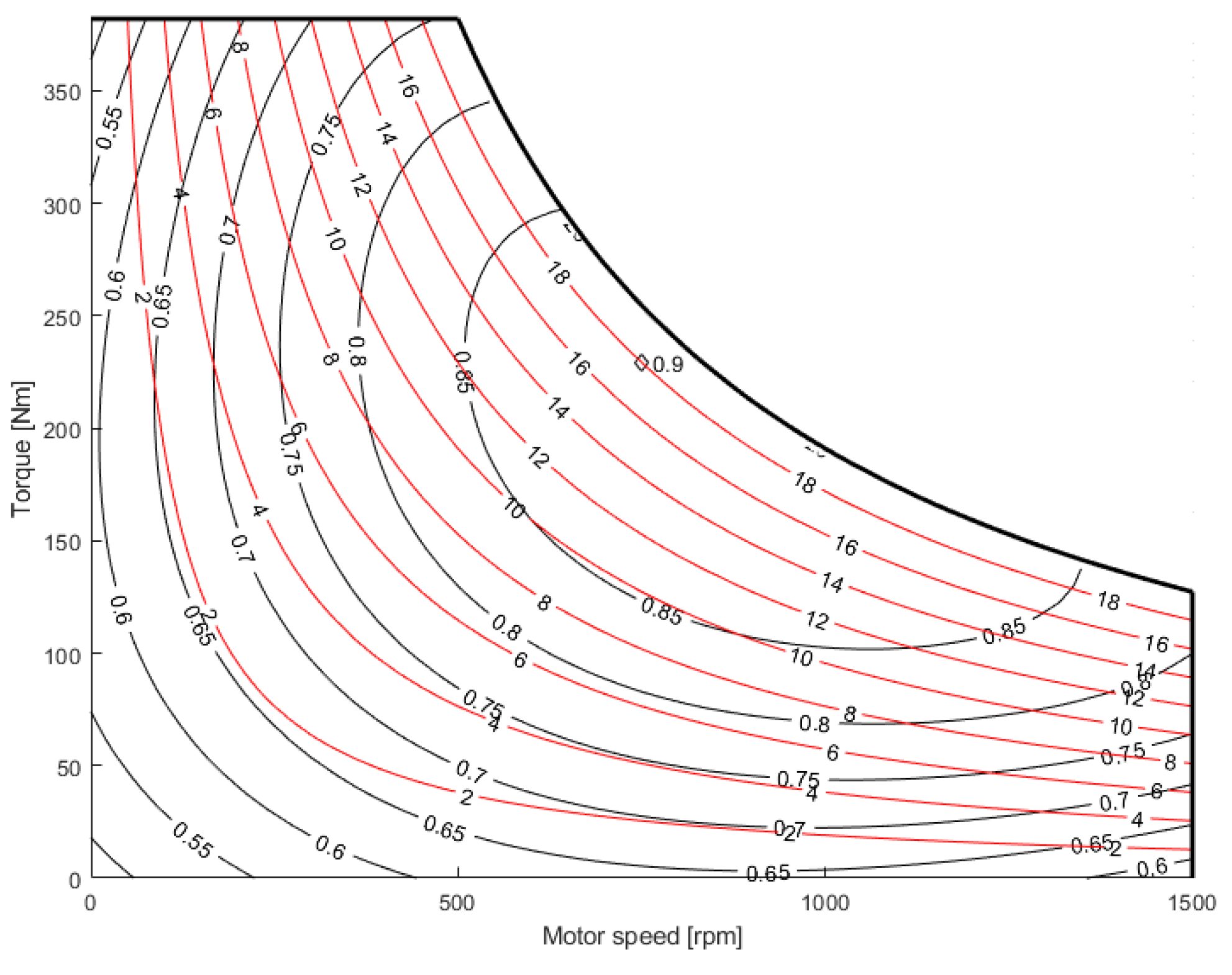
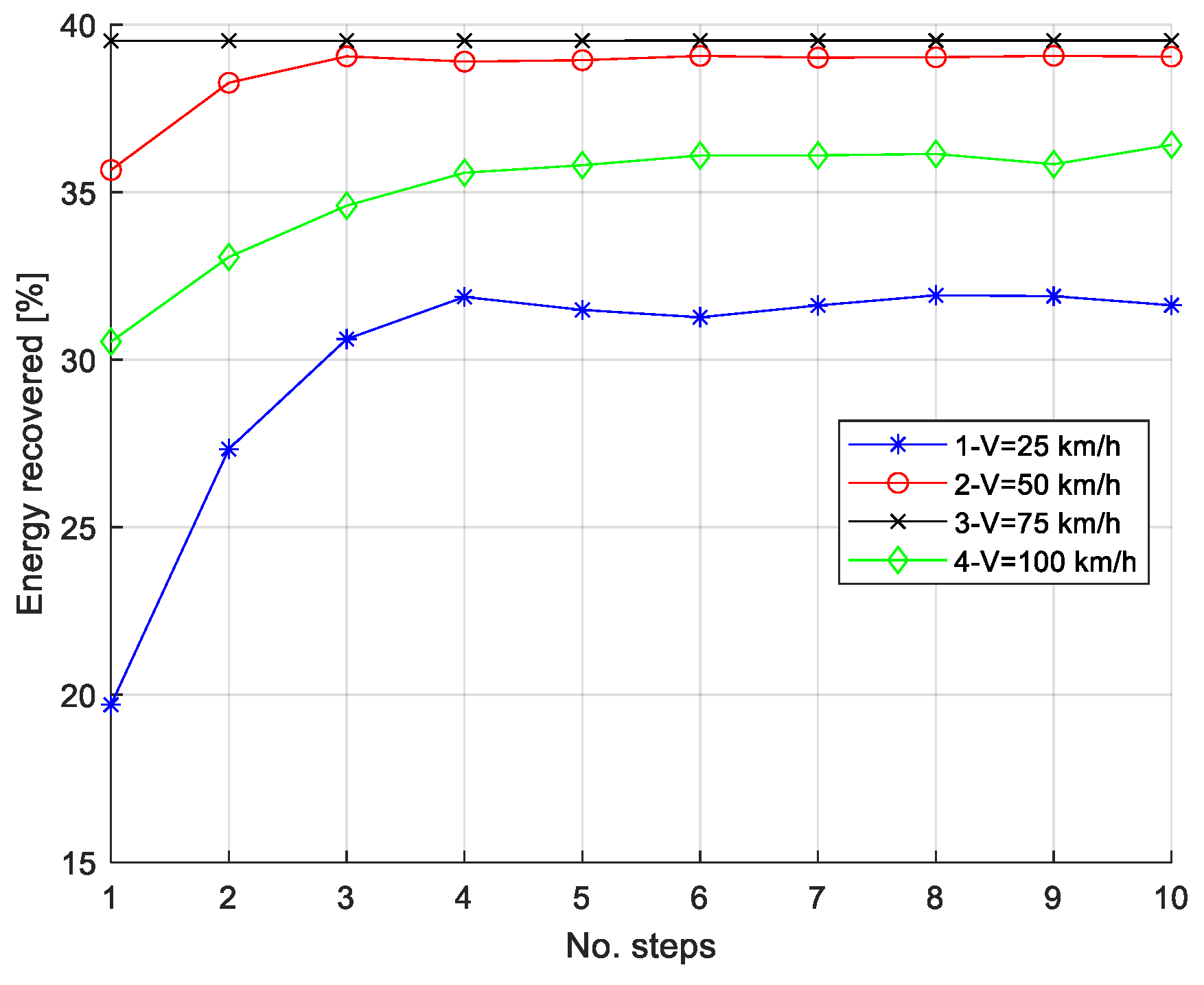
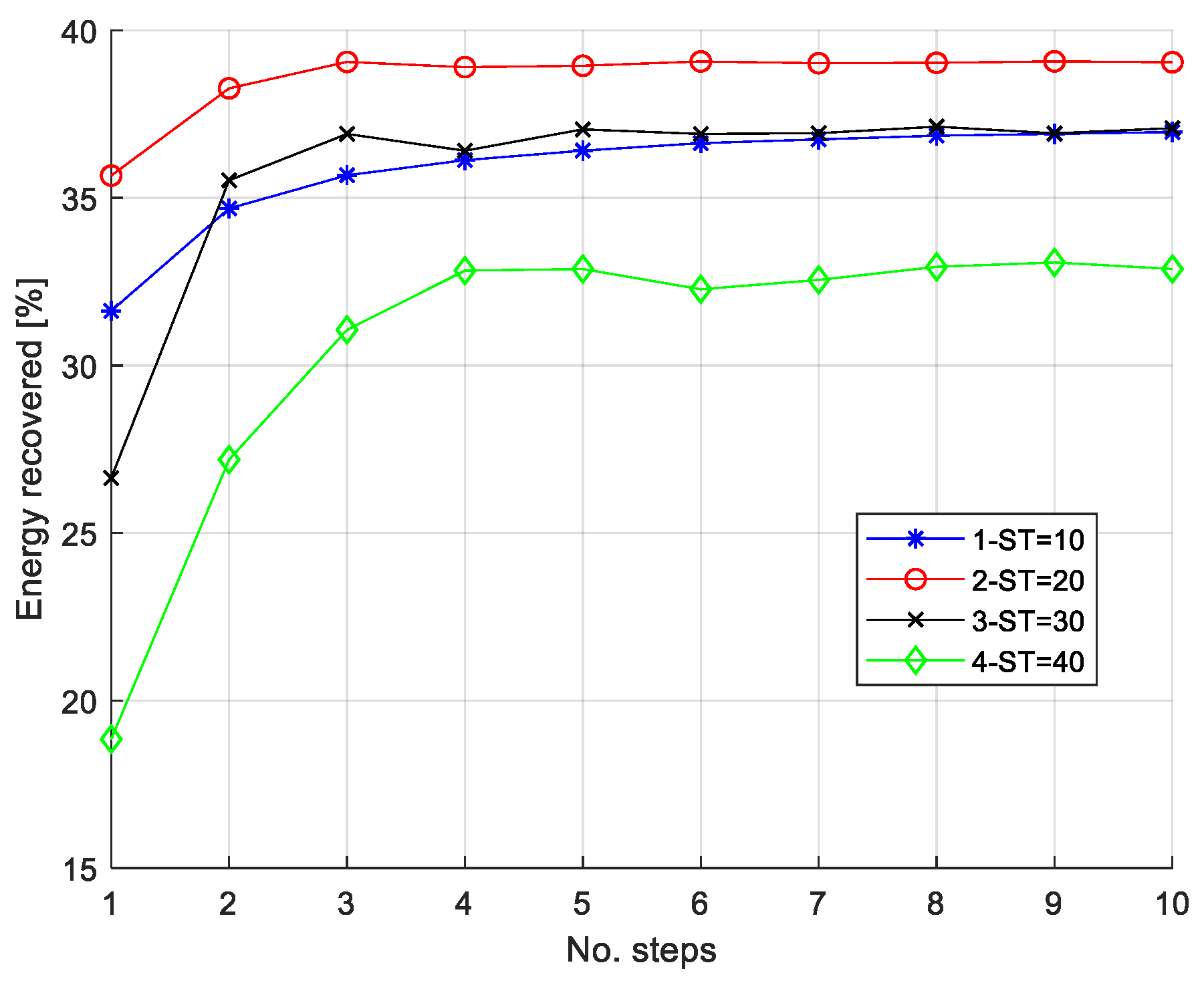

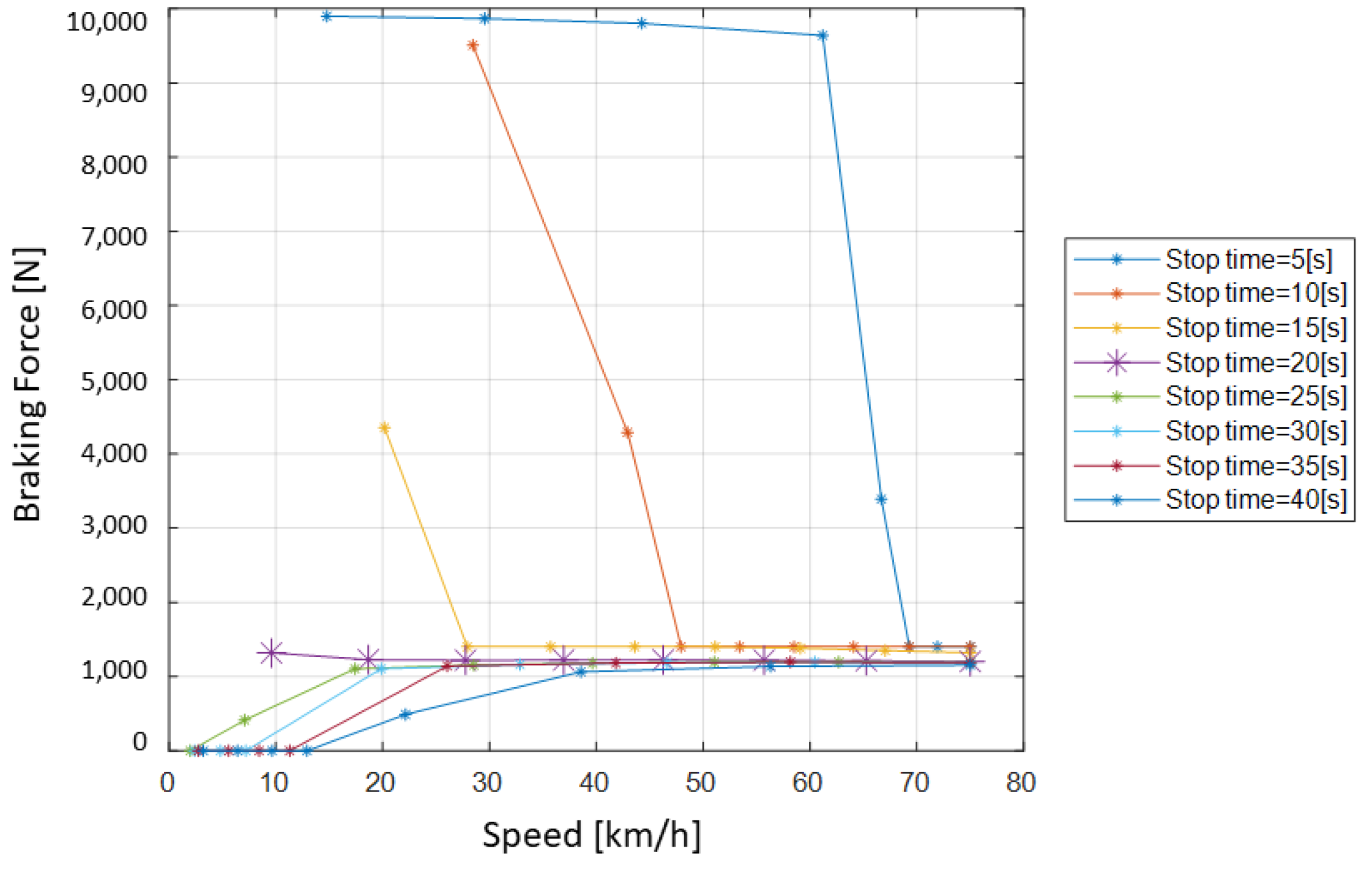

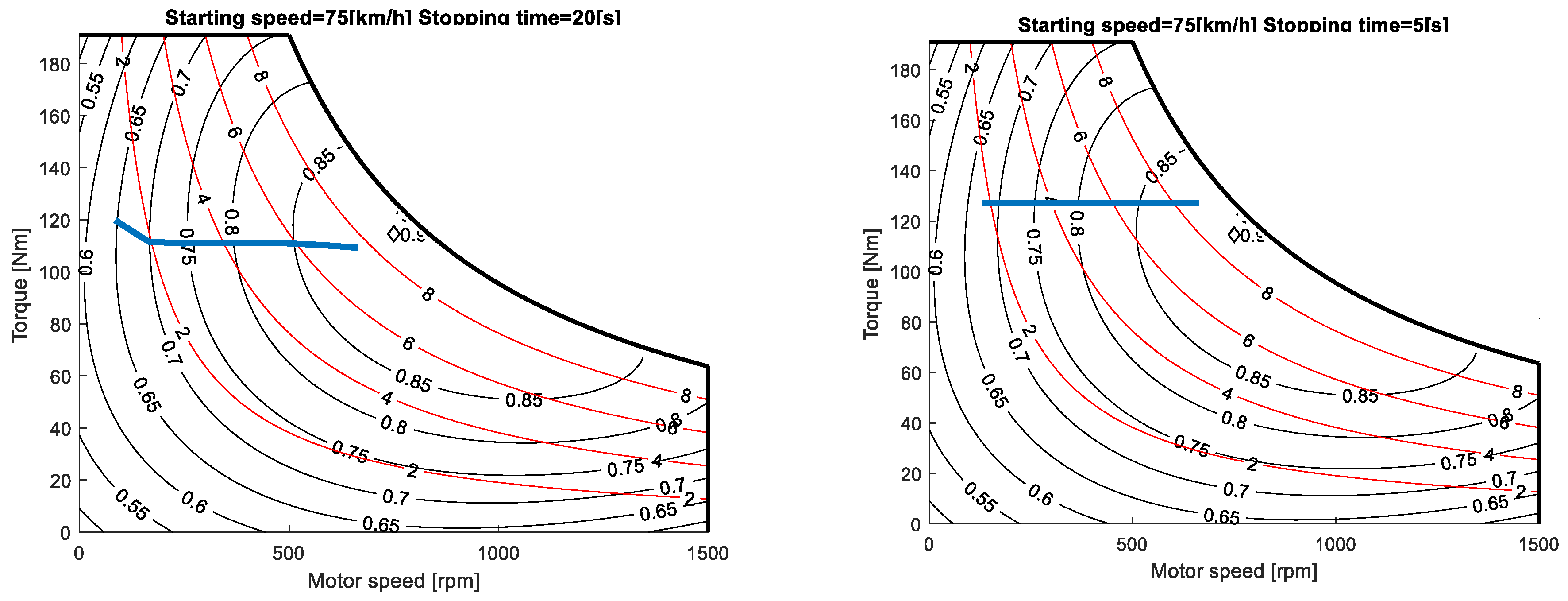
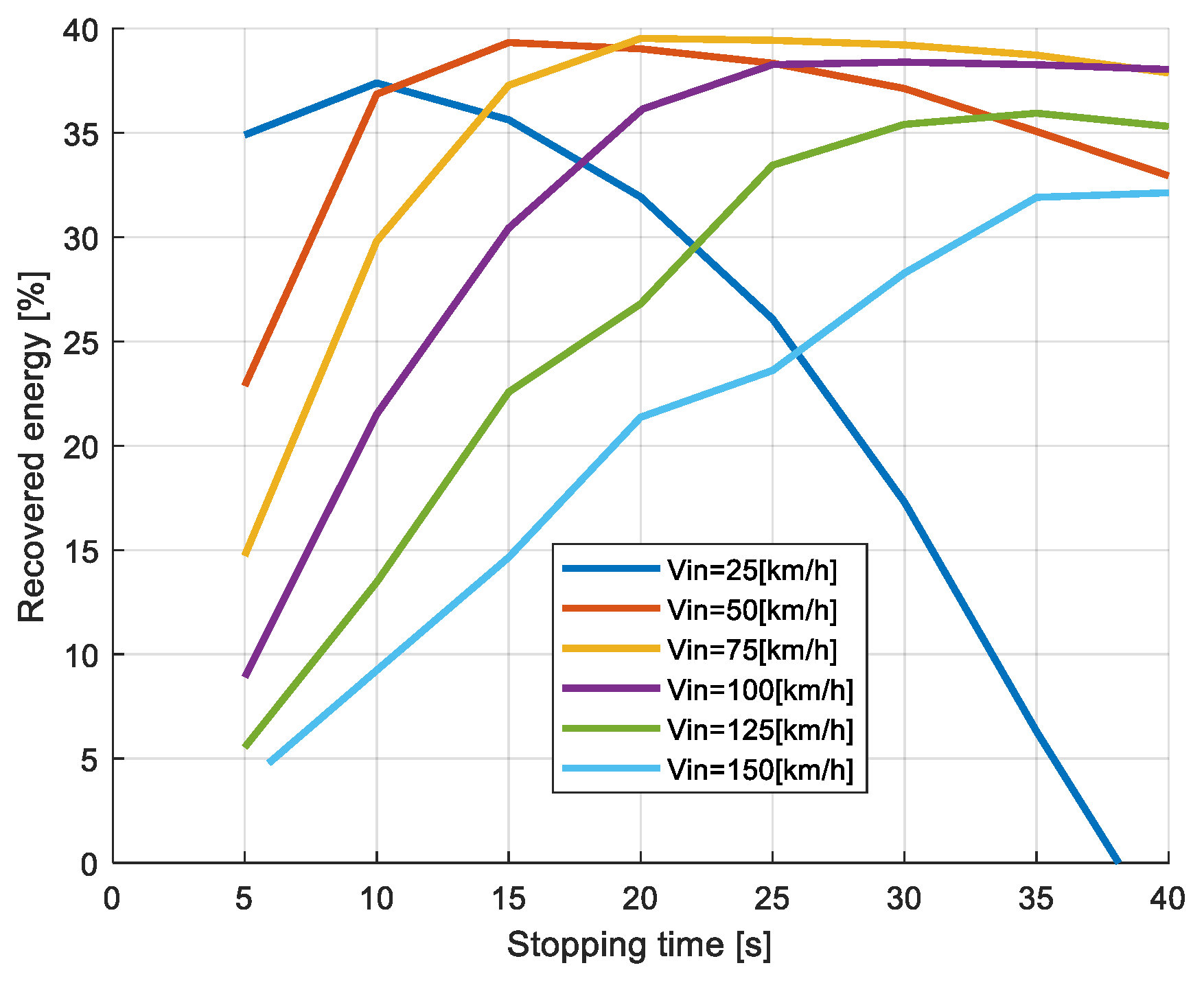

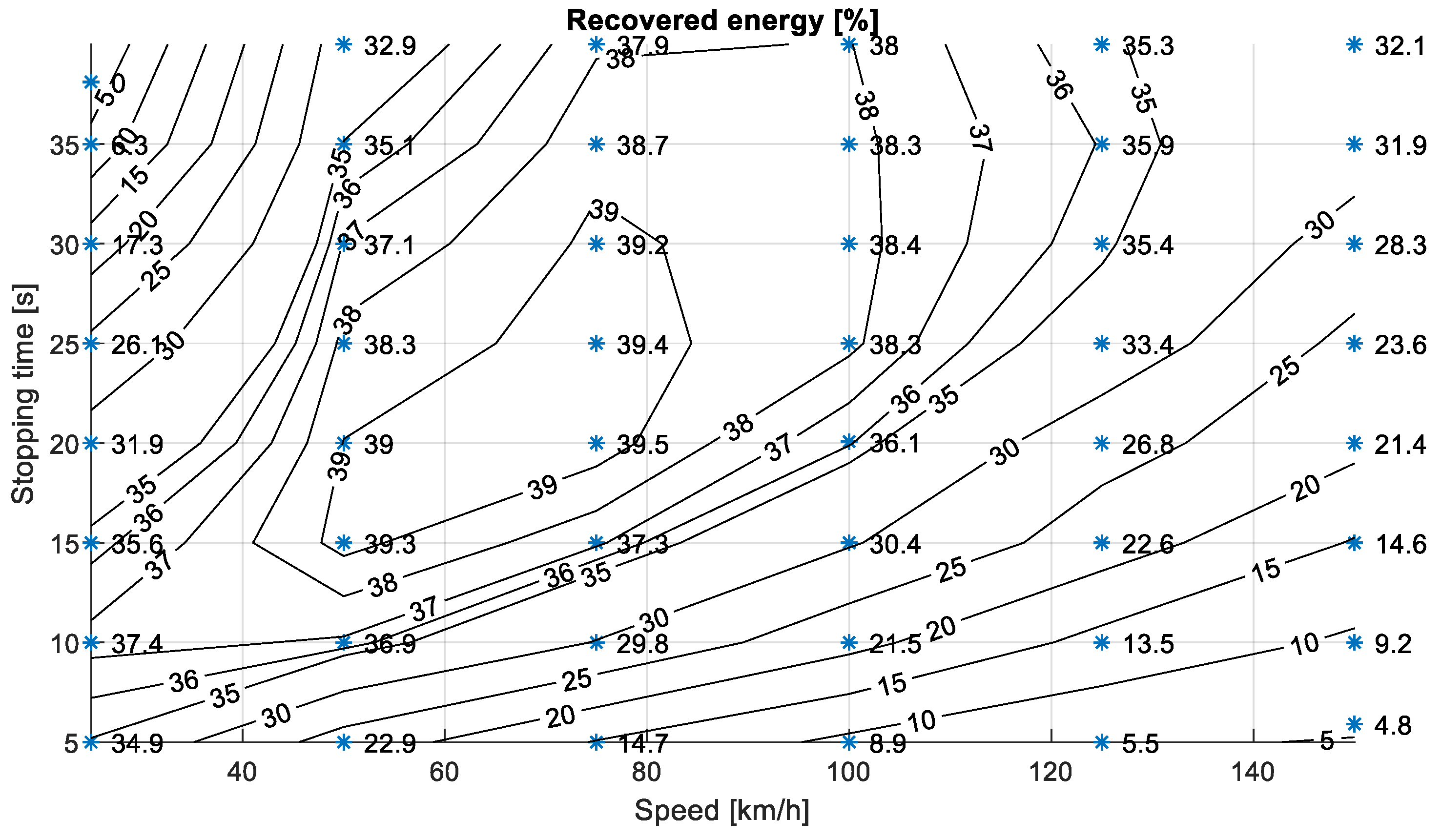
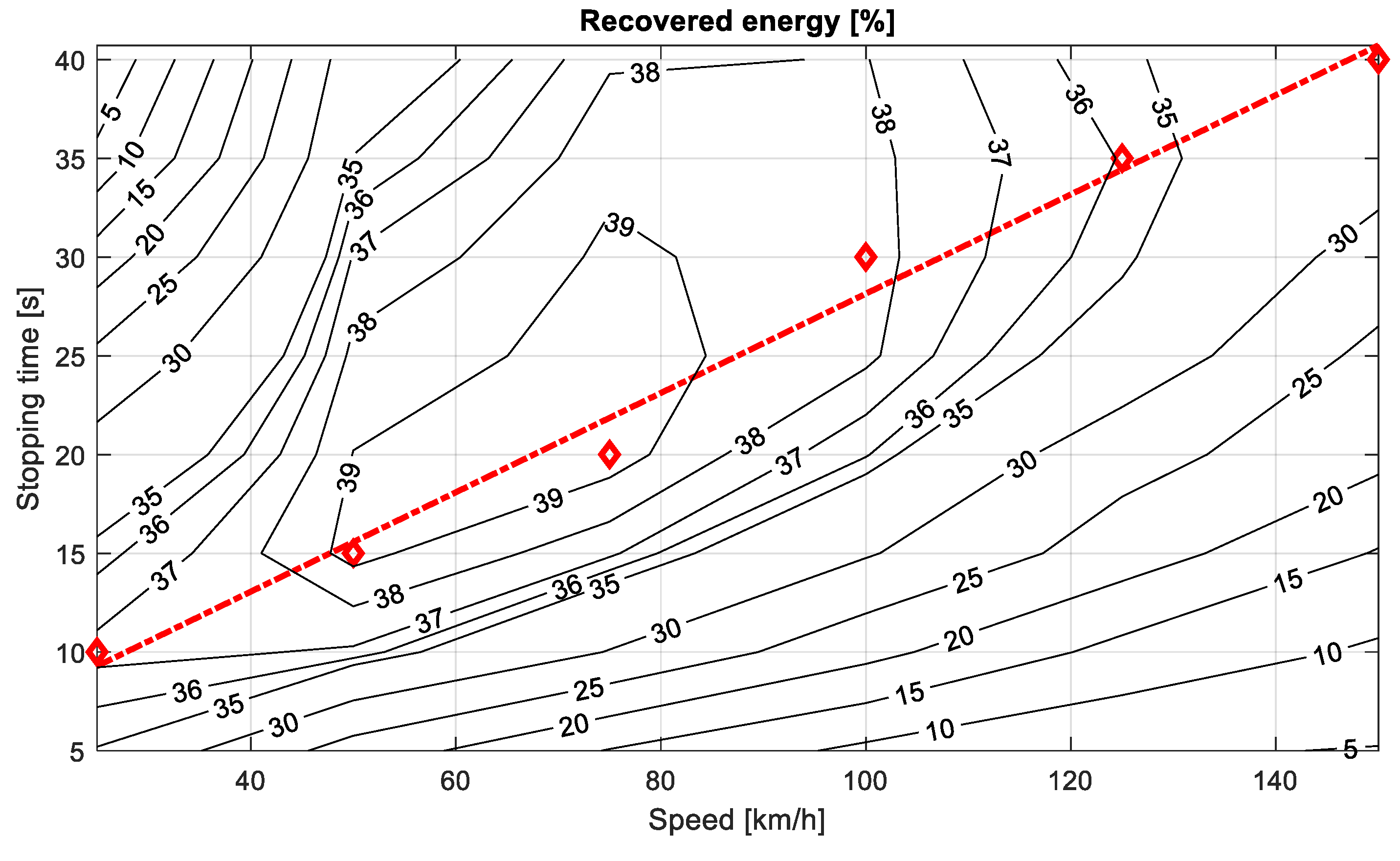
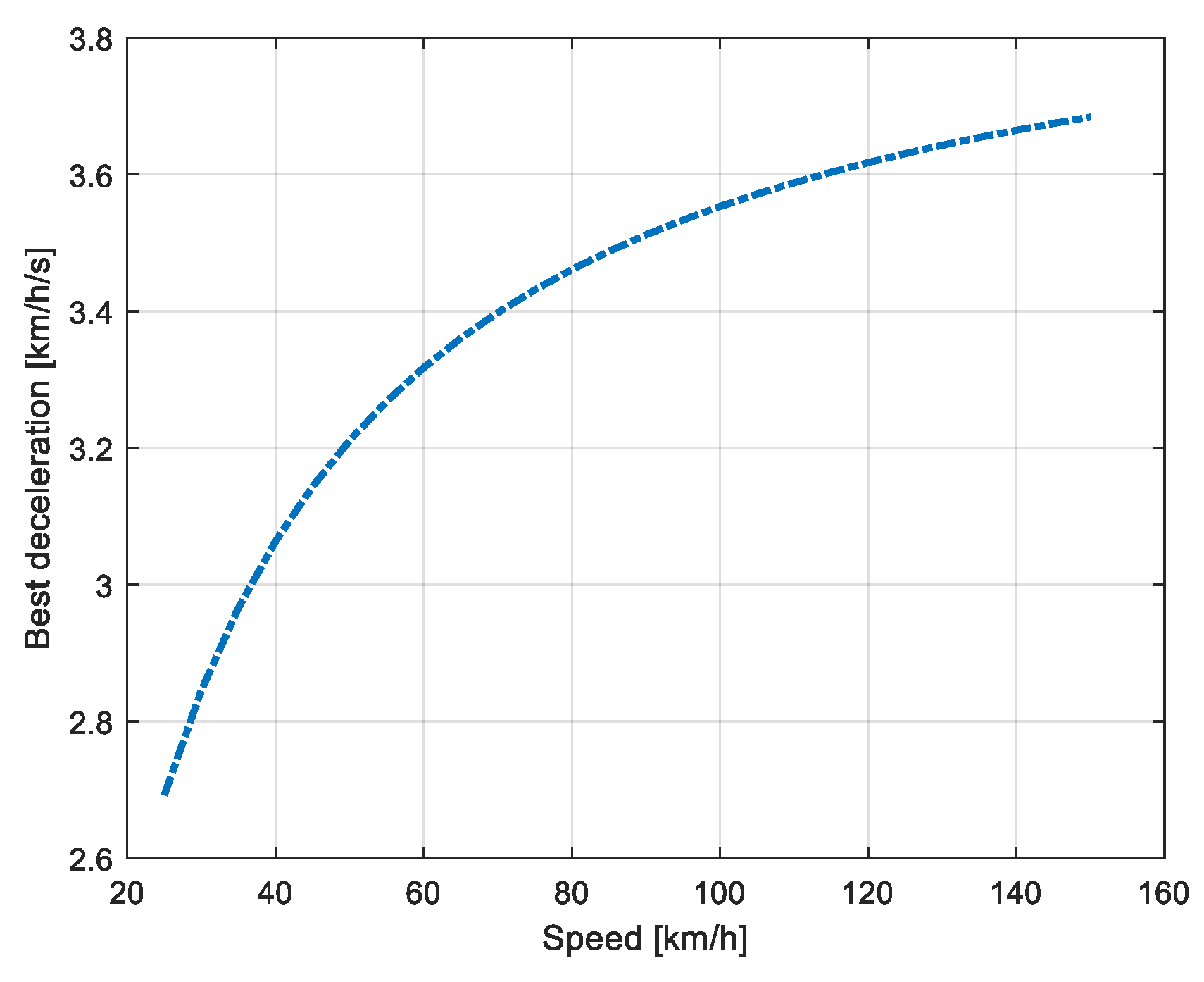
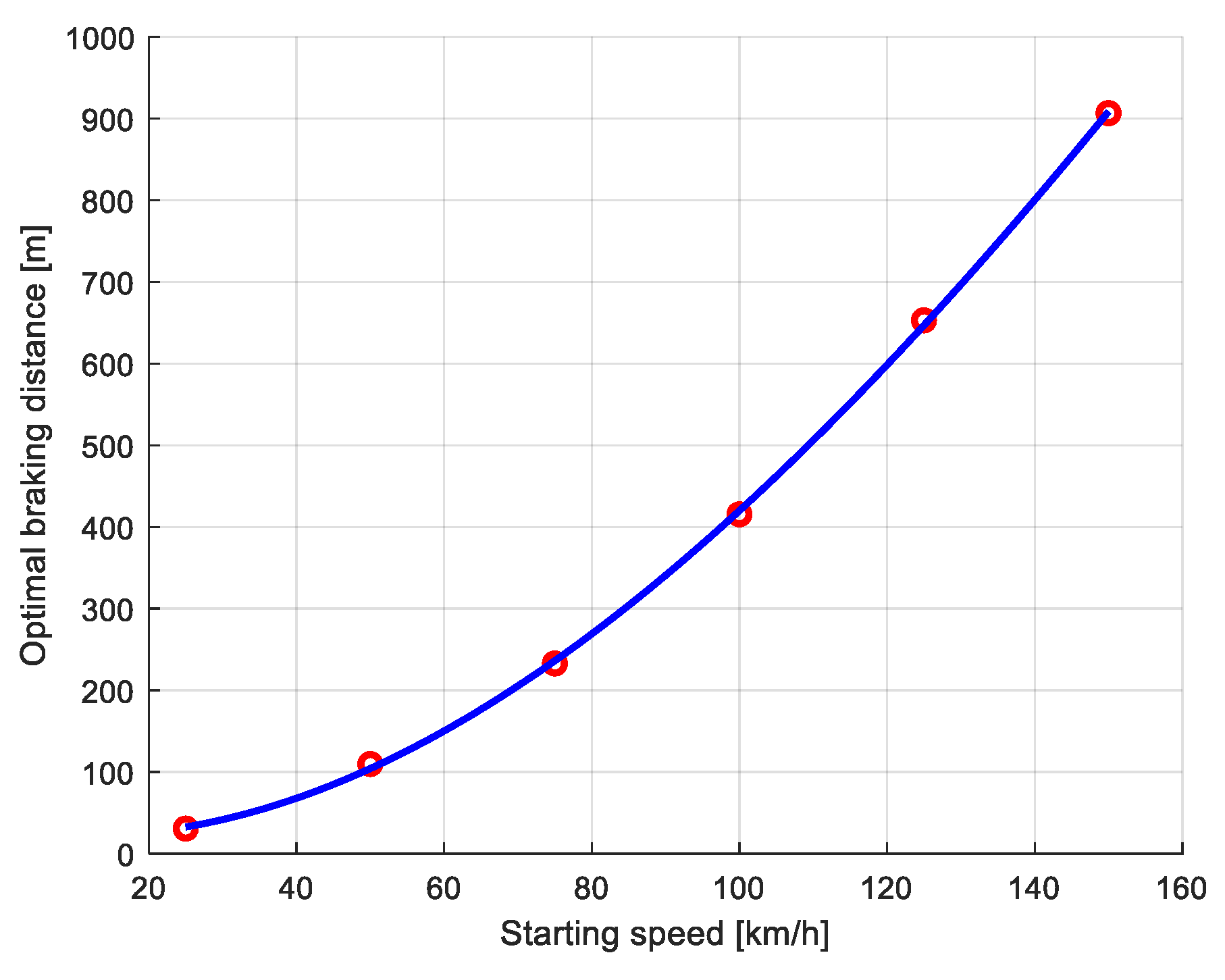
| Variable | Symbol | Value |
|---|---|---|
| Frontal area | A | 2.05 m2 |
| Wheels radius | rw | 0.295 m |
| Base vehicle mass | Mv | 1105 kg |
| Equivalent vehicle mass | Me | 1270 kg |
| Center of gravity (CG) height | h | 0.5 m |
| Front axle distance from CG | a | 1.13 m |
| Rear axle distance from CG | b | 1.38 m |
| Rated max efficiency | ηmax IWM | 0.9 |
| Rated max speed | RPMmax | 1500 rpm |
| Rated max torque | Tmax | 381.97 Nm |
| Rated max power per wheel | Pmax | 10 kW |
| Rated speed at max efficiency | RPMmax me | 750 rpm |
| Rated torque at max efficiency | T max me | 230 Nm |
| Rated power at max efficiency | P max me | 9 kW |
| Rated speed related loss coef. | k1 | 0.5 |
| Rated torque related loss coef. | k2 | 0.5 |
| Rated power related loss coef. | k3 | 0.2 |
| Rolling resistance coefficient | f0 | 0.02 |
| Coefficient of drag | cx | 0.325 |
| Grip coefficient (dry road) | μ | 0.7 |
| Air density | ρ | 1.2 kg/m3 |
Publisher’s Note: MDPI stays neutral with regard to jurisdictional claims in published maps and institutional affiliations. |
© 2021 by the authors. Licensee MDPI, Basel, Switzerland. This article is an open access article distributed under the terms and conditions of the Creative Commons Attribution (CC BY) license (https://creativecommons.org/licenses/by/4.0/).
Share and Cite
Rizzo, G.; Tiano, F.A.; Mariani, V.; Marino, M. Optimal Modulation of Regenerative Braking in Through-The-Road Hybridized Vehicles. Energies 2021, 14, 6835. https://doi.org/10.3390/en14206835
Rizzo G, Tiano FA, Mariani V, Marino M. Optimal Modulation of Regenerative Braking in Through-The-Road Hybridized Vehicles. Energies. 2021; 14(20):6835. https://doi.org/10.3390/en14206835
Chicago/Turabian StyleRizzo, Gianfranco, Francesco Antonio Tiano, Valerio Mariani, and Matteo Marino. 2021. "Optimal Modulation of Regenerative Braking in Through-The-Road Hybridized Vehicles" Energies 14, no. 20: 6835. https://doi.org/10.3390/en14206835
APA StyleRizzo, G., Tiano, F. A., Mariani, V., & Marino, M. (2021). Optimal Modulation of Regenerative Braking in Through-The-Road Hybridized Vehicles. Energies, 14(20), 6835. https://doi.org/10.3390/en14206835









